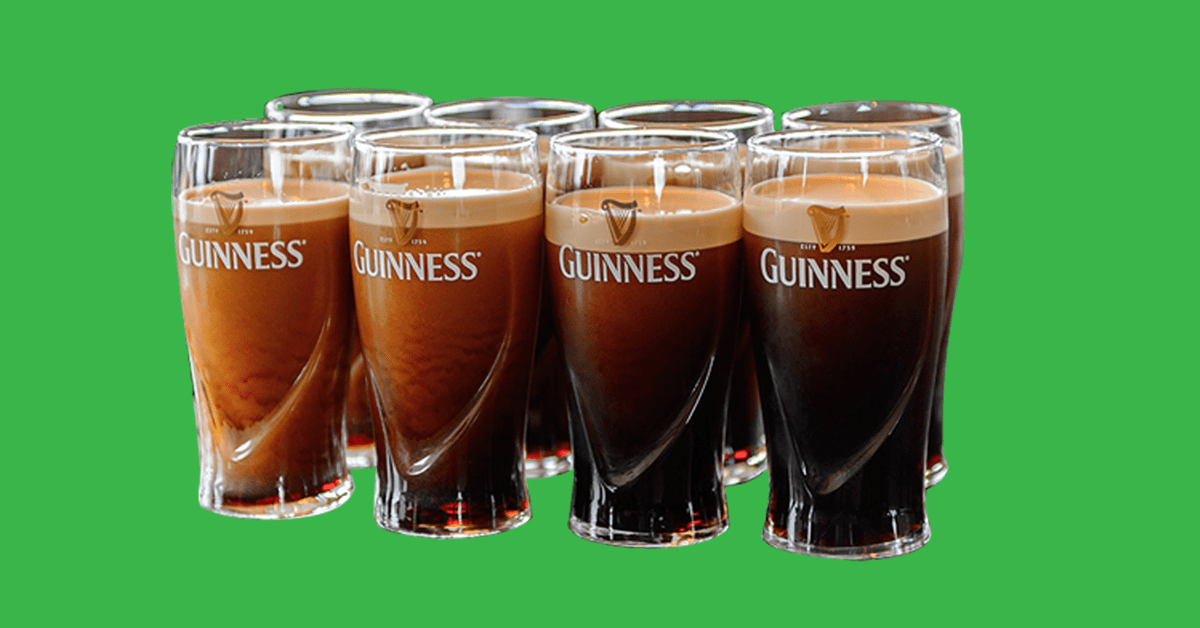
Building The Brand: The History Of Guinness
How did Guinness start?
In 1752, a man used $100 inherited from his grandfather to set up a small ale brewery in Leixlip, County Kildare–a town 18 kilometers from Dublin.
That man was named Arthur Guinness.
A short seven years later on December 31st, 1759, Arthur signed a lease on an unfitting four-acre property near James Gate in Dublin, Ireland. Being a forward thinker, Arthur signed the lease for 9000 years.
So there Arthurs was, he had four acres, a 9000-year lease, and a dream. Over the next ten years, the brewery would continue to pick up steam, and popularity. However, it wasn’t until 1769 that Guinness made their first international shipment of ale, sending six-and-a-half barrels of the ale 108 kilometers from Dublin to England.
Thirty years later, while a new style of beer called “porter” from London was becoming very popular in Dublin, Arthur was taking note. At that moment, Arthur made a decision that would change the course of the Guinness company forever. He stopped brewing their ale and went all-in on his creating new black, full-bodied beer.
Two years later, Guinness unveiled their first batch of The West India Porter, the precursor to the Guinness Foreign Extra Stout you see across the world today.
The company didn’t waste much time getting their beer out to international consumers, either. Their first shipment across the Atlantic was on October 16th, 1817 to South Carolina.
That was a different mindset than the competition. Due to the dangerous nature of sea-travel at the time, many brewers chose to keep their product local. However, by 1858, people were enjoying pints of Guinness as far away as New Zealand.
By 1868, Guinness had expanded its James Gate facility to become more of a city than a brewery, with its own medical center, railway system, and firefighters.
As the company’s popularity continued to grow, so did the ingenuity of the company. In the late 1800s, they brought in their first notable hires from British universities to help fuel innovation within the company.
And that thing, the Guinness Book of World Records? You guessed it, it came from friends arguing about which bird was the fastest–while drinking beer of course. It was in the early 1950s, Sir Hugh Beaver, the Managing Director of the Guinness Brewery at the time, was attending this party where the argument took place. A couple of years later (1955), he created the Guinness Book of World Records as a promotional tool for people arguing abstract facts, over a few brews. Little did Guinness know, but the book would become an international best-seller its first year, continue to grow in popularity and reach, become the gold standard for world records and still be in print today.
In 1963, they opened their first international brewery in Nigeria and Malaysia follows shortly after in 1965.
See for Guinness, being international wasn’t just a part of their marketing plan; it was part of their DNA. When Arthur Guinness sent those first six-and-a-half barrels of ale from Dublin over to England, he set the tone–Guinness would be for everyone, and accessible to everyone.
Today Guinness brews and distributes their beer globally to 150 amount of countries. And over 1.5 billion pints of their beer are consumed yearly.
They still operate at St. James Gate, the now 200+ acre space, and the 9000-year lease is no longer valid because Guinness bought the property outright years ago.
So next time you tip back a pint of Guinness, be sure to thank Arthur and all of the visionaries who have helped shape this iconic brand.
















